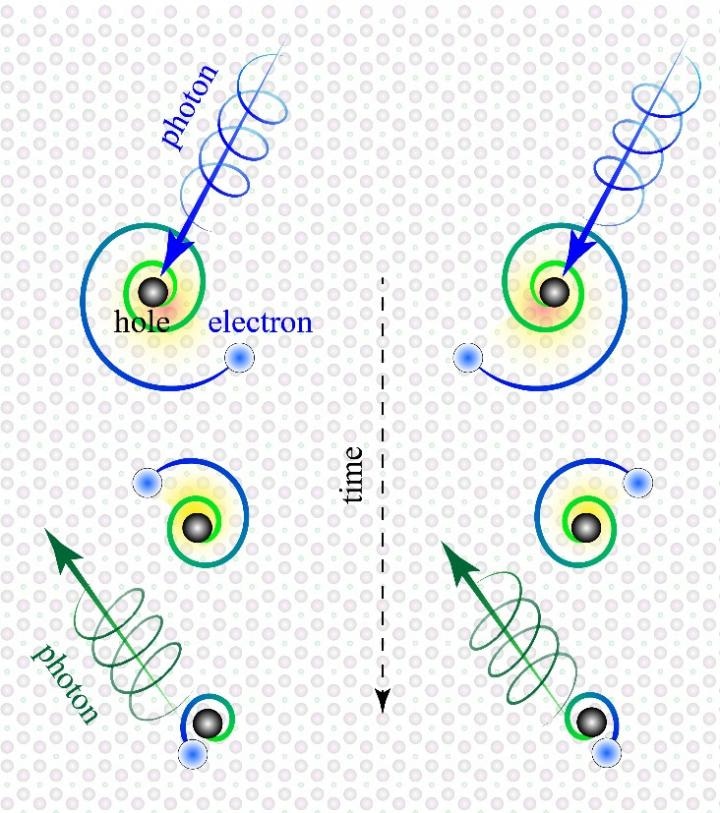Feb 19 2019
Physicists from Rutgers University and other institutions have revealed an exotic form of electrons that rotate like planets and could result in developments in solar cells, lighting, lasers, and electronic displays.
 Image Credit: Hsiang-Hsi (Sean) Kung/Rutgers University-New Brunswick
Image Credit: Hsiang-Hsi (Sean) Kung/Rutgers University-New Brunswick
A study reported in the Proceedings of the National Academy of Sciences describes that it is known as a “chiral surface exciton” and contains particles and anti-particles combined together and spinning around each other on the surface of solids.
Chiral denotes entities, akin to the left and right hands, that are comparable but are asymmetrical and cannot be superimposed on their mirror image.
Excitons are created upon shining intense light on solids, ejecting negatively charged electrons from their spots and leaving behind positively charged “holes,” states lead author Hsiang-Hsi (Sean) Kung, a graduate student in Physics Professor Girsh Blumberg’s Rutgers Laser Spectroscopy Lab at Rutgers University-New Brunswick.
The holes and electrons resemble fast rotating tops. The electrons ultimately “spiral” toward the holes, annihilating each other in less than a trillionth of a second while releasing a type of light known as “photoluminescence.” This discovery finds application in devices such as lasers, solar cells, TV, and other displays.
The researchers revealed chiral excitons on the surface of a crystal called bismuth selenide, which could be produced in large quantity and used in coatings and other materials in electronics at room temperature.
Bismuth selenide is a fascinating compound that belongs to a family of quantum materials called ‘topological insulators’. They have several channels on the surface that are highly efficient in conducting electricity.
Girsh Blumberg, Study Senior Author, Professor, Department of Physics and Astronomy, School of Arts and Sciences
The dynamics of chiral excitons are still ambiguous and the researchers wish to use ultra-fast imaging to explore them further. Chiral surface excitons may be present on other materials too.